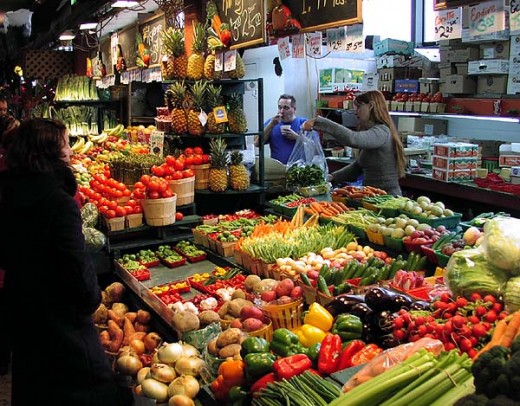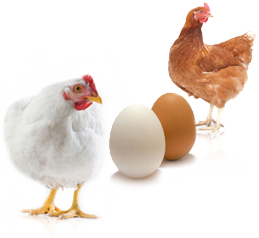- HubPages»
- Food and Cooking»
- Dietary Restrictions»
- Dietary Restrictions for Health
Gluten Free Living: Fresh, Refrigerated, Canned and Frozen Items for Cooking and Baking

Let's Go Grocery Shopping!
We are going to continue our shopping to stock our pantry and refrigerators with the basics that we require for cooking and baking. As we move away from items that can be produced in facilities that are not gluten free friendly and away from products that may contain gluten from additives, shopping becomes a bit less stressful.
Learning how to buy staples when you are shopping for the basic food ingredients in a traditional diet requires an understanding of nutrition and “how” to buy. When you transition to a gluten free life style, understanding the building blocks that form nutritious meals becomes that much more important. The building blocks of nutrition come from four food groups: grain products, vegetables and fruit, milk and alternatives and meat and alternatives. We have covered our grain products in the previous article, Gluten Free Living: Basic Pantry Items for Cooking and Baking.
The Four Food Groups in the Food Guide
Vegetables and Fruit
Vegetables and fruits can be found in three forms: fresh, frozen and canned. The best for flavour and nutrition is fresh. You can purchase fresh fruit and vegetables at your local farmers market, roadside kiosks, health food stores, chain grocers, pick your own farms and direct from the farmers. When buying fresh, make sure that you exam the produce for bruising, rotting and for freshness. Remember that when purchasing locally grown produce, the produce being offered will be season and dependent up on the weather. The main advantage to shopping at your health food store or chain grocer is that a variety of fruits and vegetables are available year round that is not dependent upon the local growing season.
Keep your refrigerator stocked with these basic fruits that are commonly called upon in recipes: peaches, grapes, apples, oranges, lemons, tomatoes, blueberries, cranberries, cherries, pears, strawberries and bananas. However, note that the peel on a banana will turn a dark chocolate brown color when placed in the refrigerator. This does not affect the taste or texture of the banana; it only affects how it looks. Again, keep in mind the fruits are only seasonal and are the most common found in recipes.
As for vegetables, keep the following on hand in your refrigerator: onions, mushrooms, zucchini, sweet bell peppers in a variety of colors, carrots (long, short and a variety of colors), potatoes, celery, and broccoli. Naturally, there are numerous vegetables that I have not listed but should be listed for their nutritional value. Just a quick note – I have listed these as these vegetables are the most frequently called for in recipes.
The second choice that I use for cooking and baking would be frozen. You can purchase both vegetables and fruits frozen that can be frozen individually by type, combined with other types and in certain themed combinations. For frozen fruit, I recommend keeping blueberries, strawberries, grapes and peaches. Frozen vegetables include mixed, carrots, beans, peas and corn.
The final form that you can find fruits and vegetables is in the canned state. Canned goods are good to have on hand in a pinch or when you cannot find it in the fresh section because it is out of season. I suggest keeping tomato paste, garbanzo beans, kidney beans, mixed beans, and baby corn. Remember to read the labels carefully in the case that a gluten ingredient has been added as a binder.

Dairy and Alternatives
Most dairy products do not pose a concern for those who are restricted to a gluten free diet. As with most foods, there are always exceptions. The first is any product that contains coloring, especially orange or yellow colored cheddar cheese. The coloring contains annatto, which should be avoided. Instead of choosing colored cheddar cheese, choose white cheddar cheese. It taste is the same as colored cheddar, but is much more healthy for you and is gluten free friendly. The second exception is cottage cheese that contains modified food starch and/or coloring. In many instances, modified food starch contains wheat, which in turn, contains gluten. Read the label carefully!!
For the baker and the cook, these are the basic necessities to help complete our dream recipe: milk, buttermilk, evaporated milk, cottage cheese, parmesan cheese, cheddar cheese, cream cheese, sour cream and unflavored yogurt. Unflavored yogurt is one of the most versatile items you can have in your fridge – it can be eat with fruit compote, fresh berries and blended in a fruit smoothie!

Eggs
Eggs come in a variety of sizes ranging from small to extra-large, and in some brands, extra-extra-large. There is a myth that brown eggs are healthier for you. This is not true. The nutritional value of the egg comes from the feed that is fed to the hen. The more natural and healthy the grain is, the higher the nutritional value of the egg. There are a many types of eggs, including Omega-3, free run, high Omega-3, organic and the regular plain egg. Depending upon your dietary needs or preferences, any one of these will do for cooking and baking, though I suggest using large eggs for baking.
Here is one other little tidbit regarding brown and white eggs. White eggs are laid from hens that have white feathers. Seriously. This is true. Brown eggs are laid from hens with brown to black feathers and have red ear lobes. Really. I am not kidding.
One more piece of information regarding the egg war. Brown eggs are more expensive than white eggs because many, many years ago, home reared hens tended to be the brown egg laying variety. These hens were fed a natural and nutritious diet which produced a tastier egg compared to those laid by commercial white hens. Also, the brown hens ate more as their size is bigger than the white hens. Since the brown eggs of the home reared hens tasted better, high end restaurants chose these eggs to serve their patrons. Word eventually spread about how tasty these types of eggs were. And, yes, this was the beginning of the egg war as commercial egg producers caught onto the idea of selling brown eggs for a higher price based on what was being spread by word of mouth. The taste of the brown egg is no different than the white egg as commercial egg producers feed the brown hens the exact same feed that they feed the white hens. The only benefactor of the egg war is the commercial egg producers.
Meat and Alternatives
Meat is an important part of our diet, and for those who do not eat meat, meat alternatives are extremely important as your diet requires protein and the complex nutritional components that cannot be found in the other food groups. Meat can be categorized by its source and the most common are: fish, beef, pork and chicken in their pure form. Variations include ham, sausage and chipped beef. The latter two can pose concern for gluten free consumption as some brands of chipped beef contain brown sugar, and the ingredients for the brown sugar are not listed. It is highly recommended that you contact the manufacturer to ensure that it is gluten free. Sausage is another culprit that may harbor gluten through the additives that are used during processing and production. Again, contact the manufacturer to verify that it is gluten free. The alternative is to purchase products that are labelled “gluten free”. There are other types of meat, but they are not listed here because I am only listing ingredients that are most commonly called for in baking and cooking recipes.
Flavorings
The most important aspect of cooking is achieving the best flavor possible. Sometimes, we require the addition of spices, herbs, vinegars, wines or other flavorings. In Gluten Free Living: Basic Pantry Items for Cooking and Baking, a description of suggested herbs and spices was discussed.
Vinegar is used as a cleaning agent, but it is also used as a flavoring. Vinegar comes in many different varieties, but distilled vinegar may pose as a possible source for gluten. For baking, I suggest apple cider vinegar.
Many cooks, especially the ones cooking at home, have a glass of wine while cooking. There are many recipes that call upon dry white wine. It leaves a wonderful taste after being cooked off in any recipe.
When baking, it is not unusual to see a recipe calling for flavoring, with vanilla being the most popular. Many flavoring contain alcohol and may contain coloring. A word of caution when choosing flavorings as the alcohol can be grain based and may not be gluten free friendly. In addition to this, caramel coloring could have been added to it, and caramel coloring contains gluten. For liquid flavorings, I strongly recommend that you purchase flavorings that are labeled “gluten free” to ensure that they are gluten free.
We Are Almost There
We have finally arrived at the end of our travels in our pantry, refrigerator and spice cupboard. We are almost ready to begin cooking and baking, but we have a few more areas to prepare before we can begin the fun. The next part in this series, Gluten Free Living: Equipment, Substitutions and Techniques for Baking and Cooking, will discuss the final points before we begin cooking.
Copyright Beth100
© September 23, 2011
Gluten Free Flavoring

- Flourless Peanut Butter Cookies
- Gluten Free Living - Where and How to Find Gluten Free Cooking and Baking Ingredients
Having to change your traditional diet to a gluten free diet can be daunting. However, with some guidance and suggestions, changing your diet can be simple and successful. This article begins with the basics of transitioning your traditional diet to - Gluten Free Living - Basic Pantry Items for Cooking and Baking - Dry Goods
Living gluten free can be a challenge as wheat gluten can be hidden in many ingredients that are used to cook and to bake foods and, especially, in prepackaged foods. I find that the best way around this is to bake and make my own gluten free foods.









